Newport/Morehead City, NC
Weather Forecast Office
La Niña: Risk of Weather Extremes 
The images below depict the odds of extreme wet/dry or warm/cold fall-spring months associated with historical La Niña episodes since 1950. Extreme weather is defined as being in the highest or lowest 20% of the 100 year record. The climatological average risk of extreme weather any given season is 20%. These composites are not intended to be a forecast of expected conditions. Rather, they use historical data to highlight locations where ENSO can potentially impact temperature and precipitation.
La Niña: Risk of Temperature Extremes
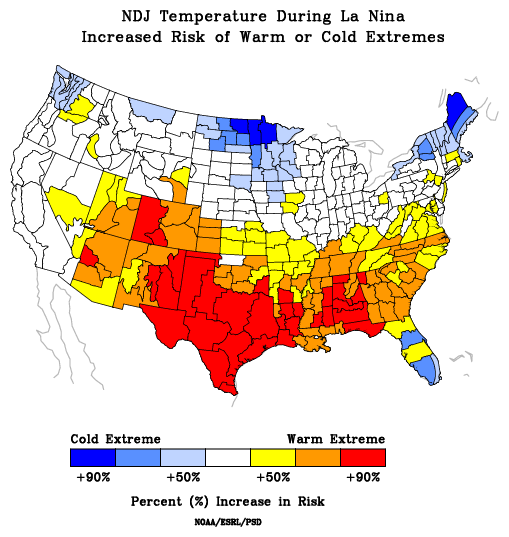 |
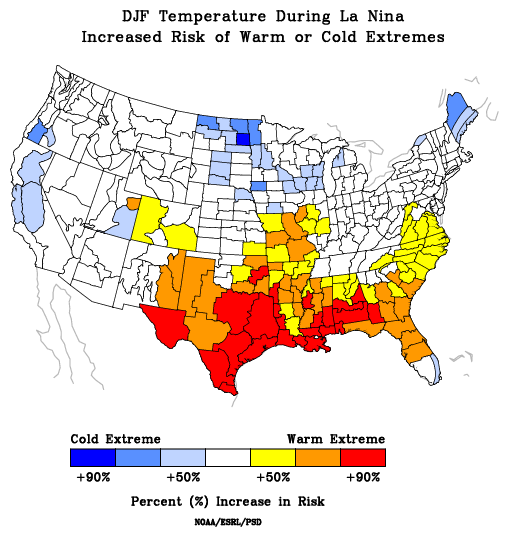 |
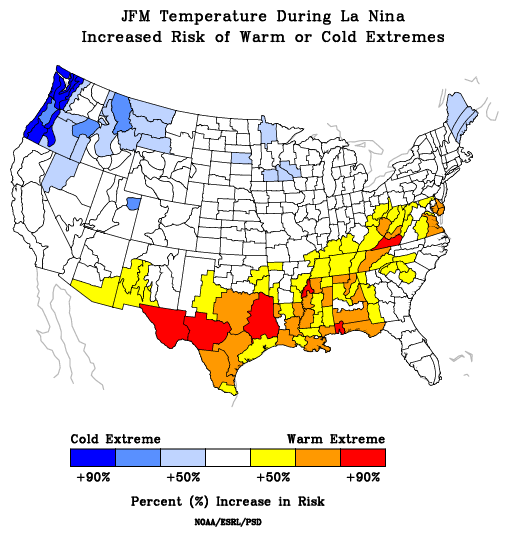 |
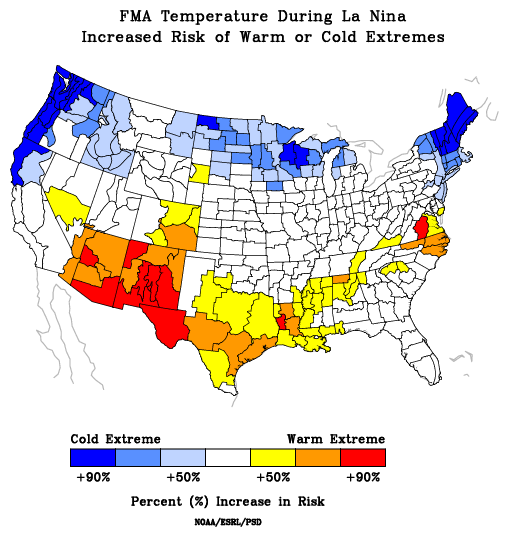 |
| November - January | December - February | January - March | February - April |
The above images depict the odds of extreme warm or cold fall-spring months associated with past La Niña's since 1950. Warm colors indicate an increased risk of warm temperature extremes, while cool colors indicate an increased risk of cold temperature extremes. Click images to enlarge.
Images courtesy of NOAA's Earth System Research Laboratory.
La Niña: Risk of Precipitation Extremes
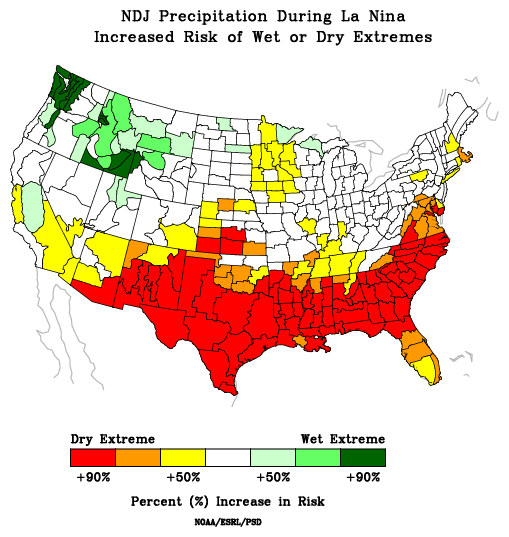 |
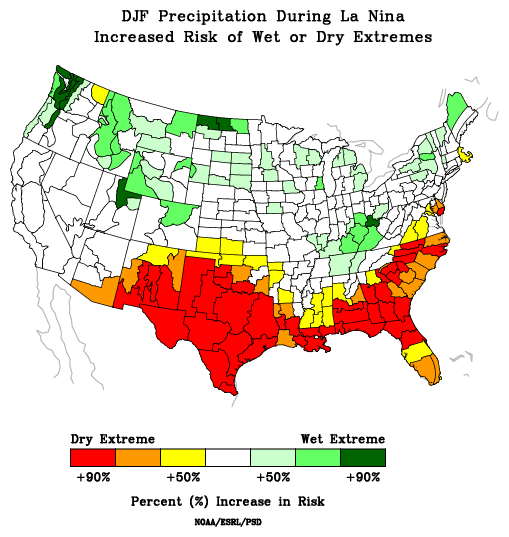 |
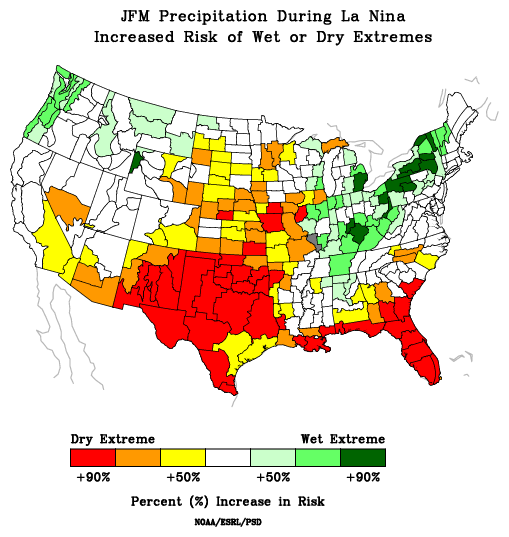 |
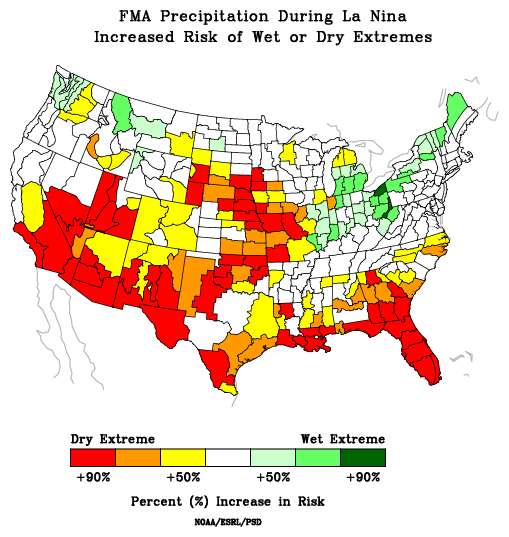 |
| November - January | December - February | January - March | February - April |
The above images depict the odds of extreme wet or dry fall-spring months associated with past La Niña's since 1950. Warm colors indicate an increased risk of dry precipitation extremes, while green colors indicate an increased risk of wet precipitation extremes. Click images to enlarge.
Hazards
Skywarn
Submit Local Storm Reports
National Storm Report Viewer
Storm Prediction Center
National Hurricane Center
Rip Currents
Forecasts
Text Products
Tropical Weather
Activity Planner
Map View
Text Forecast
Area Forecast Matrices
Point Forecast Matrices
Forecast Discussion
Aviation Forecasts
Fire Weather Forecasts
Climate/Historical
Local Climate Page
National Climate Data
Local Significant Event Summary
Climate Plots
Tropical Cyclone Reports
Observations
Mesonet
Buoy Observations
Area Rivers
UV Index
Air Quality
Other Marine Reports
Marine Information
Local Marine Forecast
National Marine Information
Surf Zone Forecast/Rip Currents
Area Tidal Predictions
Ocean Prediction Center
Experimental Marine Portal
US Dept of Commerce
National Oceanic and Atmospheric Administration
National Weather Service
Newport/Morehead City, NC
533 Roberts Rd
Newport, NC 28570
252-223-5737
Comments? Questions? Please Contact Us.


.png) Surf Forecast/Rip Currents
Surf Forecast/Rip Currents Tropical Weather
Tropical Weather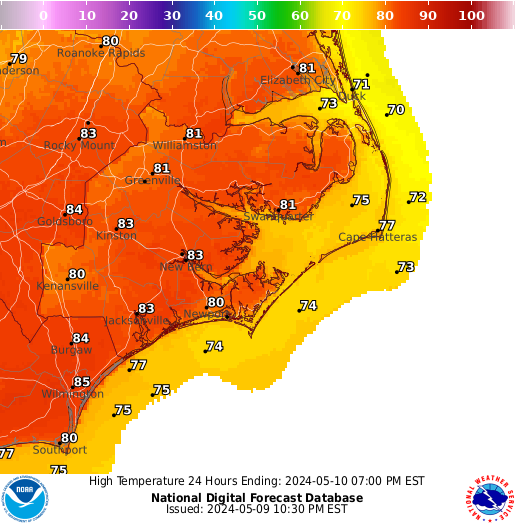 Map View
Map View Weather Hazard Briefing (when applicable)
Weather Hazard Briefing (when applicable) Forecaster Discussion
Forecaster Discussion Marine
Marine Text Products
Text Products.png) Skywarn
Skywarn Submit Storm Reports
Submit Storm Reports